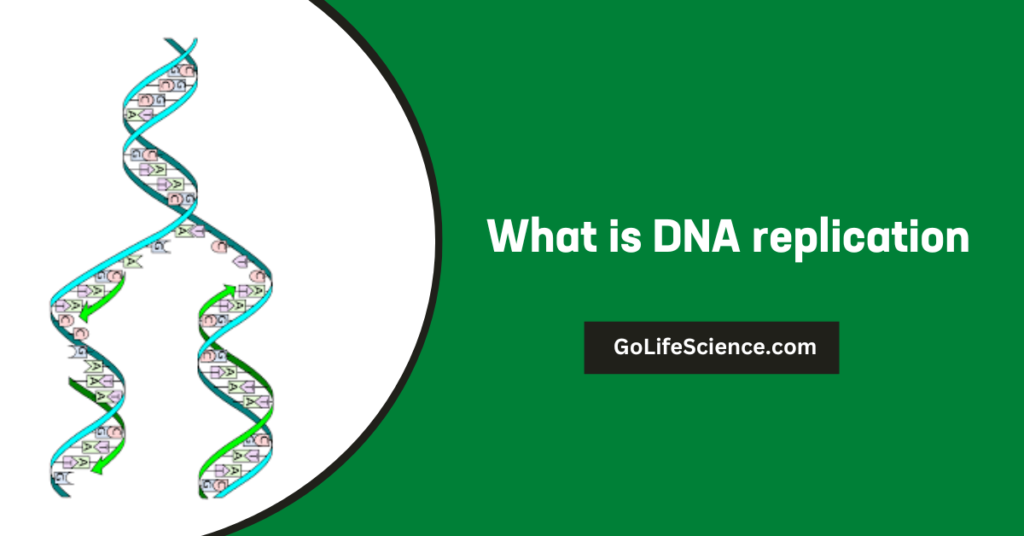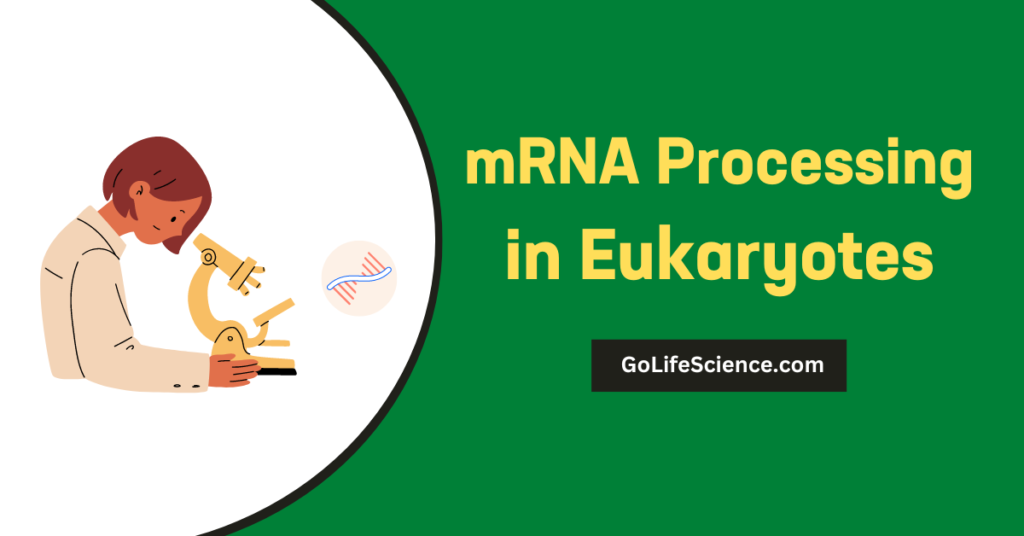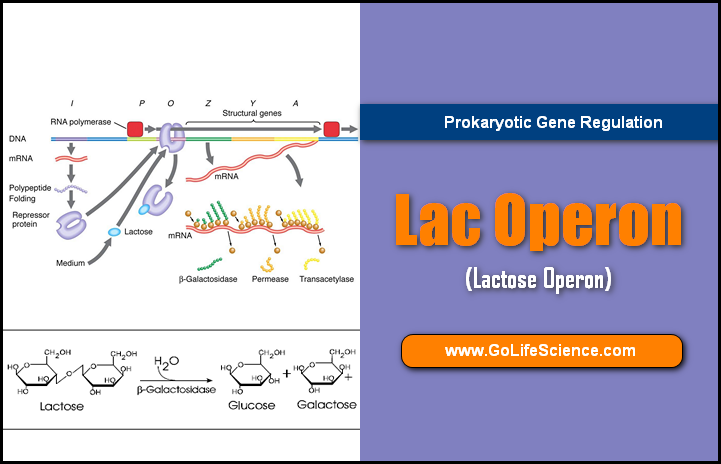
Nucleic acids, including DNA and RNA, are fundamental molecules in all living organisms. They carry genetic information and play crucial roles in protein synthesis, cell function, and heredity. Understanding the stability of nucleic acids is essential for fields such as molecular biology, genetics, forensic science, and drug development. This article explores the importance of nucleic acid stability, the factors affecting nucleic acid stability, and the biological importance of nucleic acids in detail. We will also discuss methods to measure and enhance nucleic acid stability, along with their applications in research and industry.
Table of Contents
What is Nucleic Acid Stability?
The stability of nucleic acids is critical for maintaining the integrity of genetic information. DNA and RNA are susceptible to degradation due to environmental factors, enzymatic activity, and chemical reactions. The biological importance of nucleic acids lies in their ability to store and transmit genetic information accurately. Without stable nucleic acids, cells would lose their ability to replicate, repair, and express genes, leading to mutations, diseases, and cell death.
Why is Nucleic Acid Stability Important?
- Preservation of Genetic Material: Stable nucleic acids ensure the accurate transmission of genetic information during cell division and reproduction.
- Gene Expression: The stability of DNA and RNA directly impacts gene expression. Unstable RNA molecules can degrade before translating into proteins, disrupting cellular functions.
- Drug Development: Understanding nucleic acid stability in drug development helps design stable therapeutic molecules like mRNA vaccines and gene therapies.
- Forensic Science: In forensic science, the stability of nucleic acids is crucial for analyzing DNA samples from crime scenes, even after years of storage.
Comparison of DNA and RNA Stability
| Factor | DNA | RNA |
|---|---|---|
| Structure | Double-stranded | Single-stranded |
| Thermal Stability | High | Low |
| pH Sensitivity | Stable at neutral pH | Sensitive to alkaline hydrolysis |
| Enzymatic Degradation | Resistant to RNases | Susceptible to RNases |
Common Stabilization Techniques
| Technique | Application | Benefit |
|---|---|---|
| Low-Temperature Storage | DNA at -20°C, RNA at -80°C | Prevents degradation |
| Chemical Modifications | Methylation, LNAs | Enhances resistance to nucleases |
| Buffers | TE buffer for DNA, RNase-free buffers for RNA | Maintains pH and prevents enzymatic activity |
Factors Affecting Nucleic Acid Stability
The stability of nucleic acids is influenced by various physical, chemical, and biological factors. Below, we discuss the key factors that impact the stability of DNA and RNA.
1. How Temperature Impacts Nucleic Acid Stability
Temperature is a critical factor affecting the thermal stability of DNA and RNA. High temperatures can cause nucleic acid denaturation, where the double-stranded DNA or RNA unwinds into single strands. Conversely, low temperatures can slow down enzymatic degradation and chemical reactions, preserving nucleic acids.
- DNA Stability: DNA is relatively stable at moderate temperatures but denatures at high temperatures (above 90°C).
- RNA Stability: RNA is less stable than DNA and can degrade at lower temperatures due to its single-stranded structure.
| Condition | DNA Stability | RNA Stability |
|---|---|---|
| Temperature | Stable at moderate temperatures | Less stable; degrades at lower temps |
| pH | Stable at neutral pH | Sensitive to alkaline hydrolysis |
| Enzymatic Degradation | Resistant to RNases | Susceptible to RNases |
| Chemical Stability | Resistant to hydrolysis | Prone to hydrolysis |
2. Role of pH in Nucleic Acid Stability
The pH and nucleic acids relationship is crucial for maintaining their stability. Extreme pH levels can disrupt hydrogen bonds and cause nucleic acid denaturation.
- Acidic Conditions: Low pH (acidic environments) can lead to the depurination of DNA, where purine bases are lost, causing mutations.
- Alkaline Conditions: High pH (alkaline environments) can hydrolyze RNA, breaking phosphodiester bonds and degrading the molecule.
3. Stability of DNA vs RNA Under Different Conditions
DNA and RNA exhibit different stability profiles due to their structural differences.
4. Chemical Modifications That Enhance Nucleic Acid Stability
Chemical modifications can improve the stability of nucleic acids in research and therapeutic applications. For example:
- Methylation: Adding methyl groups to DNA can protect it from enzymatic degradation.
- Locked Nucleic Acids (LNAs): LNAs are modified RNA nucleotides with enhanced hybridization stability and resistance to nucleases.
- Phosphorothioate Backbone: Replacing oxygen with sulfur in the phosphate backbone increases resistance to nucleases.
5. Effect of Metal Ions on Nucleic Acid Stability
Metal ions like Mg²⁺ and Ca²⁺ play a significant role in stabilizing nucleic acids by neutralizing the negative charge on the phosphate backbone. However, heavy metals like lead and cadmium can cause DNA damage and repair issues.
6. Enzymatic Degradation and Nucleic Acid Stability
Enzymes like DNases and RNases can degrade nucleic acids. Preventing enzymatic hydrolysis is essential for maintaining nucleic acid stability in laboratory settings.
Methods to Measure Nucleic Acid Stability
Accurately measuring the stability of nucleic acids is essential for ensuring the reliability of experimental results in molecular biology, genetics, and biotechnology. Nucleic acids, such as DNA and RNA, are prone to degradation due to environmental factors, enzymatic activity, and chemical reactions. Therefore, researchers employ a variety of techniques to assess nucleic acid stability, quantify degradation, and ensure the integrity of genetic material. Below, we expand on the most commonly used methods to measure nucleic acid stability, including their principles, applications, and advantages.
1. Spectrophotometry
Spectrophotometry is a widely used technique to measure the concentration and purity of nucleic acids by analyzing their absorbance at specific wavelengths. Nucleic acids absorb ultraviolet (UV) light maximally at 260 nm due to the presence of aromatic bases (adenine, guanine, cytosine, thymine, and uracil).
Procedure
- A spectrophotometer measures the absorbance of a nucleic acid sample at 260 nm and 280 nm.
- The ratio of absorbance at 260 nm to 280 nm (A260/A280) is used to assess purity.
- A ratio of ~1.8 indicates pure DNA.
- A ratio of ~2.0 indicates pure RNA.
- Deviations from these ratios suggest contamination with proteins or other impurities.
Applications
- Quantifying nucleic acid concentration.
- Assessing sample purity before downstream applications like PCR or sequencing.
Advantages
- Quick and easy to perform.
- Requires minimal sample volume.
Limitations
- Cannot distinguish between intact and degraded nucleic acids.
- Contaminants like phenol or proteins can affect accuracy.
2. Gel Electrophoresis
Gel electrophoresis separates nucleic acids based on their size and charge. Intact nucleic acids migrate as distinct bands, while degraded samples appear as smears.
Procedure
- Nucleic acid samples are loaded onto an agarose or polyacrylamide gel.
- An electric field is applied, causing negatively charged nucleic acids to migrate toward the positive electrode.
- After electrophoresis, the gel is stained with dyes like ethidium bromide or SYBR Green to visualize the nucleic acids under UV light.
Applications
- Assessing the integrity of DNA and RNA.
- Detecting degradation or fragmentation.
Advantages
- Provides visual confirmation of nucleic acid integrity.
- Can separate nucleic acids by size, allowing for detailed analysis.
Limitations
- Time-consuming compared to spectrophotometry.
- Requires specialized equipment and reagents.
3. Real-Time PCR (qPCR)
Real-time PCR (quantitative PCR) amplifies specific DNA or RNA sequences and quantifies them in real time. Degraded nucleic acids show reduced amplification efficiency.
Procedure
- Nucleic acid samples are used as templates for PCR amplification.
- Fluorescent dyes or probes detect the amplification products during each cycle.
- The cycle threshold (Ct) value indicates the starting quantity of the target nucleic acid.
Applications
- Quantifying DNA or RNA levels.
- Assessing degradation by comparing amplification efficiency.
Advantages
- Highly sensitive and specific.
- Can detect small amounts of nucleic acids.
Limitations
- Requires primers and probes specific to the target sequence.
- Expensive equipment and reagents.
4. Thermal Melting Analysis
Thermal melting analysis measures the thermal stability of DNA by determining the temperature at which the double-stranded DNA denatures into single strands.
Procedure
- A DNA sample is heated gradually while its absorbance at 260 nm is monitored.
- The melting temperature (Tm) is the temperature at which 50% of the DNA is denatured.
- Higher Tm values indicate greater stability.
Applications
- Studying the effects of mutations, chemical modifications, or environmental conditions on DNA stability.
- Optimizing PCR conditions.
Advantages
- Provides quantitative data on DNA stability.
- Can be used to study hybridization stability.
Limitations
- Requires specialized equipment.
- Limited to double-stranded DNA.
5. Capillary Electrophoresis
Capillary electrophoresis separates nucleic acids based on their size and charge using a narrow capillary tube. It offers higher resolution than traditional gel electrophoresis.
Procedure
- Nucleic acid samples are injected into a capillary filled with a separation matrix.
- An electric field is applied, causing the nucleic acids to migrate.
- A detector at the end of the capillary records the separated nucleic acids.
Applications
- Analyzing the size distribution of DNA or RNA fragments.
- Detecting degradation or contamination.
Advantages
- High resolution and sensitivity.
- Requires minimal sample volume.
Limitations
- Expensive equipment and consumables.
- Requires technical expertise.
6. Northern and Southern Blotting
Northern blotting is used to detect specific RNA molecules, while Southern blotting detects specific DNA sequences. Both techniques involve hybridization with labeled probes.
Procedure
- Nucleic acids are separated by gel electrophoresis and transferred to a membrane.
- The membrane is hybridized with a labeled probe complementary to the target sequence.
- The probe binds to the target nucleic acid, which is then detected.
Applications
- Assessing RNA stability and degradation.
- Detecting specific DNA or RNA sequences.
Advantages
- Highly specific for target sequences.
- Can detect low-abundance nucleic acids.
Limitations
- Time-consuming and labor-intensive.
- Requires labeled probes.
7. RNA Integrity Number (RIN) Analysis
RIN analysis evaluates RNA integrity by analyzing the electrophoretic trace of an RNA sample. It assigns a score from 1 (degraded) to 10 (intact).
Procedure
- RNA samples are analyzed using an Agilent Bioanalyzer or similar instrument.
- The software calculates the RIN based on the ribosomal RNA peaks.
Applications
- Assessing RNA quality for downstream applications like RNA sequencing.
- Monitoring RNA degradation.
Advantages
- Provides a quantitative measure of RNA integrity.
- Highly reproducible.
Limitations
- Requires specialized equipment.
- Expensive for routine use.
8. Mass Spectrometry
Mass spectrometry (MS) measures the mass-to-charge ratio of nucleic acid fragments, providing detailed information about their chemical composition and modifications.
Procedure
- Nucleic acids are ionized and fragmented.
- The fragments are separated based on their mass-to-charge ratio.
- A detector records the mass spectrum.
Applications
- Identifying chemical modifications that affect stability.
- Studying nucleic acid-protein interactions.
Advantages
- High sensitivity and accuracy.
- Can detect small chemical changes.
Limitations
- Expensive and complex instrumentation.
- Requires technical expertise.
9. Fluorescence-Based Assays
Fluorescence-based assays use dyes that bind to nucleic acids and emit fluorescence, allowing for quantification and stability assessment.
Procedure
- Nucleic acid samples are mixed with fluorescent dyes like PicoGreen (for DNA) or RiboGreen (for RNA).
- Fluorescence intensity is measured using a fluorometer.
Applications
- Quantifying nucleic acid concentration.
- Assessing degradation.
Advantages
- Highly sensitive.
- Suitable for high-throughput analysis.
Limitations
- Dyes may bind non-specifically to contaminants.
- Requires calibration with standards.
10. Enzymatic Assays
Enzymatic assays measure the activity of nucleases or other enzymes that degrade nucleic acids, providing indirect information about stability.
Procedure
- Nucleic acid samples are incubated with nucleases.
- The extent of degradation is measured using spectrophotometry, gel electrophoresis, or other techniques.
Applications
- Studying the effects of enzymatic degradation on nucleic acid stability.
- Screening for nuclease inhibitors.
Advantages
- Provides insights into enzymatic degradation mechanisms.
- Can be adapted for high-throughput screening.
Limitations
- Indirect measurement of stability.
- Requires careful control of experimental conditions.
Summary Table: Methods to Measure Nucleic Acid Stability
| Method | Principle | Applications | Advantages | Limitations |
|---|---|---|---|---|
| Spectrophotometry | Absorbance at 260 nm and 280 nm | Quantifying concentration and purity | Quick and easy | Cannot detect degradation |
| Gel Electrophoresis | Separation by size and charge | Assessing integrity and detecting degradation | Visual confirmation of integrity | Time-consuming |
| Real-Time PCR (qPCR) | Amplification and quantification | Quantifying DNA/RNA and assessing degradation | Highly sensitive and specific | Expensive and requires primers |
| Thermal Melting Analysis | DNA denaturation temperature | Studying thermal stability | Quantitative data on stability | Limited to double-stranded DNA |
| Capillary Electrophoresis | High-resolution separation | Analyzing size distribution | High resolution and sensitivity | Expensive and complex |
| Northern/Southern Blotting | Hybridization with labeled probes | Detecting specific sequences | Highly specific | Time-consuming and labor-intensive |
| RIN Analysis | Electrophoretic trace of RNA | Assessing RNA integrity | Quantitative and reproducible | Requires specialized equipment |
| Mass Spectrometry | Mass-to-charge ratio of fragments | Identifying chemical modifications | High sensitivity and accuracy | Expensive and complex |
| Fluorescence-Based Assays | Fluorescent dye binding | Quantifying concentration and degradation | Highly sensitive | Dyes may bind non-specifically |
| Enzymatic Assays | Nuclease activity measurement | Studying enzymatic degradation | Insights into degradation mechanisms | Indirect measurement |
Stabilization Techniques for Nucleic Acids in Research
Maintaining the stability of nucleic acids is critical for ensuring the accuracy and reproducibility of experimental results in molecular biology, genetics, and biotechnology. Nucleic acids, such as DNA and RNA, are prone to degradation due to environmental factors, enzymatic activity, and chemical reactions. Therefore, researchers employ a variety of stabilization techniques to preserve the integrity of nucleic acids during storage, handling, and analysis. Below, we expand on the most effective methods for stabilizing nucleic acids in research, including their principles, applications, and practical considerations.
1. Optimal Storage Conditions
Proper storage conditions are the first line of defense against nucleic acid degradation. Temperature, humidity, and exposure to light can significantly impact the stability of DNA and RNA.
a. Temperature Control
- DNA Storage: DNA is relatively stable at moderate temperatures but should ideally be stored at -20°C for long-term preservation. For extended storage, -80°C is recommended.
- RNA Storage: RNA is more labile than DNA and should be stored at -80°C to prevent degradation. Avoid repeated freeze-thaw cycles, as they can accelerate RNA degradation.
b. Buffers and Solutions
- TE Buffer: DNA is often stored in Tris-EDTA (TE) buffer, which maintains a neutral pH and chelates metal ions that can catalyze degradation.
- RNase-Free Buffers: RNA should be stored in RNase-free buffers or water treated with diethyl pyrocarbonate (DEPC) to inactivate RNases.
c. Lyophilization (Freeze-Drying)
- Lyophilization removes water from nucleic acid samples, significantly extending their shelf life. Lyophilized DNA and RNA can be stored at room temperature for extended periods and rehydrated when needed.
2. Chemical Stabilizers
Chemical additives can protect nucleic acids from degradation by inhibiting enzymatic activity or neutralizing reactive molecules.
- EDTA (Ethylenediaminetetraacetic Acid): EDTA chelates divalent metal ions like Mg²⁺ and Ca²⁺, which are cofactors for nucleases. This prevents enzymatic degradation of nucleic acids.
- RNase Inhibitors: RNase inhibitors are proteins that bind to and inactivate RNases, protecting RNA from degradation. They are commonly used in RNA extraction and storage protocols.
- Antioxidants: Antioxidants like β-mercaptoethanol or DTT (dithiothreitol) can protect nucleic acids from oxidative damage caused by reactive oxygen species (ROS).
3. Chemical Modifications
Chemical modifications can enhance the stability of nucleic acids by making them more resistant to enzymatic degradation and environmental stressors.
- Methylation: Adding methyl groups to DNA can protect it from restriction enzymes and nucleases. Methylation is a natural modification in eukaryotic DNA that also regulates gene expression.
- Locked Nucleic Acids (LNAs): LNAs are modified RNA nucleotides with a methylene bridge that locks the ribose ring. This modification increases hybridization stability and resistance to nucleases.
- Phosphorothioate Backbone: Replacing the oxygen atoms in the phosphate backbone with sulfur creates phosphorothioate DNA, which is more resistant to nucleases.
4. Physical Stabilization Methods
Physical methods can protect nucleic acids from mechanical stress and environmental factors.
- Encapsulation: Nucleic acids can be encapsulated in liposomes or nanoparticles, which protect them from enzymatic degradation and facilitate delivery into cells.
- Immobilization on Solid Supports: DNA or RNA can be immobilized on solid supports like silica beads or membranes, which stabilize the molecules and prevent degradation.
5. Preventing Enzymatic Degradation
Enzymes like DNases and RNases are major contributors to nucleic acid degradation. Preventing their activity is essential for maintaining nucleic acid stability.
- RNase-Free Techniques: It uses RNase-free reagents, tubes, and pipette tips. Wear gloves to prevent contamination with RNases from skin.
- DNase Treatment: Treat DNA samples with DNase inhibitors or use DNase-free reagents to prevent DNA degradation.
6. Environmental Control
Environmental factors like pH, light, and humidity can affect nucleic acid stability.
- pH Control: Maintain a neutral pH (7.0–8.0) for DNA and RNA storage. Extreme pH levels can cause nucleic acid denaturation or hydrolysis.
- Protection from Light: Nucleic acids, especially RNA, are sensitive to UV light. Store samples in amber tubes or wrap them in aluminum foil to protect them from light exposure.
- Humidity Control: High humidity can lead to hydrolysis of nucleic acids. Use desiccants or store samples in low-humidity environments.
7. Advanced Stabilization Techniques
- Cryopreservation: Cryopreservation involves storing nucleic acids at ultra-low temperatures (e.g., in liquid nitrogen at -196°C). This method is highly effective for long-term preservation.
- Nucleic Acid Folding: Proper folding of RNA into secondary and tertiary structures can enhance its stability. Techniques like thermal annealing can promote correct folding.
- Use of Stabilizing Agents: Additives like trehalose or polyethylene glycol (PEG) can stabilize nucleic acids by forming protective matrices around the molecules.
8. Applications of Stabilization Techniques
- Drug Development: Stable nucleic acids are essential for developing mRNA vaccines, gene therapies, and antisense oligonucleotides.
- Forensic Science: Preserving DNA samples from crime scenes ensures accurate forensic analysis, even after years of storage.
- Biobanking: Stabilization techniques are critical for long-term storage of genetic material in biobanks for research and clinical applications.
Summary Table: Stabilization Techniques for Nucleic Acids
| Technique | Principle | Applications | Advantages | Limitations |
|---|---|---|---|---|
| Temperature Control | Low temperatures slow degradation | Long-term storage of DNA and RNA | Simple and effective | Requires specialized equipment |
| Buffers (TE, RNase-Free) | Maintain pH and inhibit nucleases | Routine storage of nucleic acids | Easy to implement | May require optimization |
| Chemical Modifications | Enhance resistance to degradation | Therapeutic nucleic acids and research probes | Highly effective | Complex synthesis and purification |
| Encapsulation | Protects nucleic acids from enzymes | Drug delivery and gene therapy | Enhances delivery and stability | Requires specialized materials |
| RNase/DNase Inhibitors | Prevent enzymatic degradation | RNA and DNA extraction and storage | Highly specific | May interfere with downstream assays |
| Lyophilization | Removes water to extend shelf life | Long-term storage of nucleic acids | Room temperature storage | Requires specialized equipment |
| Cryopreservation | Ultra-low temperatures prevent degradation | Biobanking and research | Extremely effective for long-term storage | Expensive and complex |
By employing these stabilization techniques, researchers can preserve the integrity of nucleic acids, ensuring reliable results in their experiments and applications. Each method has its strengths and limitations, making it important to choose the appropriate technique based on the specific research goals and sample characteristics. Proper stabilization not only enhances the quality of research but also opens new possibilities in drug development, forensic science, and genetic engineering.
Applications of Nucleic Acid Stability
The stability of nucleic acids is a cornerstone of modern molecular biology, genetics, and biotechnology. Understanding and optimizing nucleic acid stability has far-reaching implications across various fields, from healthcare and forensic science to agriculture and environmental studies. Below, we explore the key applications of nucleic acid stability, highlighting its importance in research, industry, and clinical settings.
1. Drug Development
The stability of nucleic acids plays a pivotal role in the development of novel therapeutic agents, including mRNA vaccines, gene therapies, and antisense oligonucleotides.
a. mRNA Vaccines
- Example: COVID-19 mRNA vaccines (e.g., Pfizer-BioNTech and Moderna).
- Role of Stability: mRNA vaccines rely on the delivery of stable mRNA molecules that encode viral proteins. Chemical modifications, such as pseudouridine and 5-methylcytidine, enhance mRNA stability and reduce immunogenicity, ensuring effective protein production in host cells.
b. Gene Therapy
- Example: CRISPR-Cas9 and viral vector-based therapies.
- Role of Stability: Stable DNA or RNA is essential for delivering therapeutic genes to target cells. For instance, adeno-associated viruses (AAVs) are used to deliver stable DNA constructs for treating genetic disorders like spinal muscular atrophy (SMA).
c. Antisense Oligonucleotides
- Example: Nusinersen (Spinraza) for SMA.
- Role of Stability: Antisense oligonucleotides are chemically modified to resist nuclease degradation, ensuring they remain stable long enough to modulate gene expression.
2. Forensic Science
In forensic science, the stability of nucleic acids is critical for analyzing DNA samples from crime scenes, even after years of storage.
a. DNA Profiling
- Role of Stability: Stable DNA ensures accurate profiling and identification of individuals. Techniques like short tandem repeat (STR) analysis rely on intact DNA samples to generate reliable results.
b. Ancient DNA Analysis
- Role of Stability: Preserving DNA from ancient remains or historical artifacts allows researchers to study evolutionary history and trace human migration patterns.
c. Cold Case Investigations
- Role of Stability: Stable DNA samples enable forensic scientists to revisit cold cases and solve crimes using advanced genetic techniques.
3. Biobanking and Genetic Research
Biobanks store biological samples, including DNA and RNA, for research and clinical applications. The stability of nucleic acids is essential for maintaining the integrity of these samples over time.
a. Long-Term Storage
- Role of Stability: Stable nucleic acids ensure that samples remain viable for future studies, such as genome-wide association studies (GWAS) or personalized medicine.
b. Disease Research
- Role of Stability: Researchers rely on stable DNA and RNA to study the genetic basis of diseases like cancer, diabetes, and neurodegenerative disorders.
c. Population Genetics
- Role of Stability: Stable nucleic acids enable large-scale studies of genetic variation and evolution across populations.
4. Agriculture and Biotechnology
The stability of nucleic acids is crucial for developing genetically modified organisms (GMOs) and improving crop yields.
a. Genetically Modified Crops
- Role of Stability: Stable DNA ensures the successful integration of desirable traits, such as pest resistance or drought tolerance, into crop genomes.
b. RNA Interference (RNAi)
- Role of Stability: RNAi technology relies on stable RNA molecules to silence specific genes in plants, offering a sustainable approach to pest control.
c. Synthetic Biology
- Role of Stability: Stable nucleic acids are essential for designing synthetic biological systems, such as biosensors or biofactories.
5. Environmental Studies
The stability of nucleic acids is important for studying microbial communities and environmental DNA (eDNA) in ecosystems.
a. Microbial Ecology
- Role of Stability: Stable DNA and RNA enable researchers to analyze microbial diversity and function in soil, water, and air samples.
b. Environmental DNA (eDNA)
- Role of Stability: eDNA analysis relies on stable nucleic acids to detect and monitor species in aquatic and terrestrial environments, aiding conservation efforts.
c. Bioremediation
- Role of Stability: Stable nucleic acids are used to engineer microorganisms for degrading pollutants and cleaning up contaminated sites.
6. Clinical Diagnostics
The stability of nucleic acids is critical for developing accurate and reliable diagnostic tests.
a. PCR-Based Diagnostics
- Role of Stability: Stable DNA and RNA ensure the accuracy of PCR-based tests for infectious diseases, genetic disorders, and cancer.
b. Liquid Biopsies
- Role of Stability: Stable circulating tumor DNA (ctDNA) and RNA enable non-invasive detection of cancer and monitoring of treatment response.
c. Point-of-Care Testing
- Role of Stability: Stable nucleic acids are essential for developing portable diagnostic devices for use in resource-limited settings.
7. Evolutionary Biology
The stability of nucleic acids allows researchers to study the genetic basis of evolution and speciation.
a. Phylogenetics
- Role of Stability: Stable DNA sequences are used to construct phylogenetic trees and study evolutionary relationships among species.
b. Molecular Clocks
- Role of Stability: Stable nucleic acids enable researchers to estimate the timing of evolutionary events based on genetic mutations.
8. Industrial Biotechnology
The stability of nucleic acids is important for developing industrial enzymes and bio-based products.
a. Enzyme Engineering
- Role of Stability: Stable DNA and RNA are used to engineer enzymes for applications in biofuel production, food processing, and pharmaceuticals.
b. Metabolic Engineering
- Role of Stability: Stable nucleic acids enable the design of microbial strains for producing biofuels, bioplastics, and other bio-based chemicals.
Summary Table: Applications of Nucleic Acid Stability
| Application | Role of Nucleic Acid Stability | Examples |
|---|---|---|
| Drug Development | Ensures effective delivery and function of therapeutic nucleic acids | mRNA vaccines, gene therapies, antisense oligonucleotides |
| Forensic Science | Enables accurate DNA profiling and analysis | DNA profiling, ancient DNA analysis, cold case investigations |
| Biobanking and Research | Preserves genetic material for future studies | GWAS, disease research, population genetics |
| Agriculture | Facilitates genetic modification and crop improvement | GMOs, RNAi, synthetic biology |
| Environmental Studies | Supports analysis of microbial communities and eDNA | Microbial ecology, eDNA analysis, bioremediation |
| Clinical Diagnostics | Ensures accuracy of diagnostic tests | PCR-based diagnostics, liquid biopsies, point-of-care testing |
| Evolutionary Biology | Enables study of genetic evolution and speciation | Phylogenetics, molecular clocks |
| Industrial Biotechnology | Supports enzyme and metabolic engineering | Biofuel production, bioplastics, bio-based chemicals |
By understanding and optimizing the stability of nucleic acids, researchers and industries can unlock new possibilities in healthcare, agriculture, environmental conservation, and beyond. The applications of nucleic acid stability are vast and continue to expand as new technologies and techniques emerge.
Final words on Nucleic Acid Stability
The stability of nucleic acids is a cornerstone of molecular biology and genetics. Understanding the factors affecting nucleic acid stability, such as temperature, pH, and enzymatic activity, is crucial for research, diagnostics, and therapeutic applications. By employing stabilization techniques and accurate measurement methods, scientists can preserve the integrity of nucleic acids and unlock their full potential in various fields.
Key Takeaways
- The stability of nucleic acids is vital for maintaining genetic information and ensuring proper gene expression.
- Factors like temperature, pH, and enzymatic activity significantly impact nucleic acid stability.
- Chemical modifications and proper storage conditions can enhance the stability of DNA and RNA.
- Applications of nucleic acid stability span drug development, forensic science, and genetic research.
By understanding and optimizing nucleic acid stability, researchers can advance scientific knowledge and develop innovative solutions for healthcare and biotechnology.
References
- Stability and delivery challenges of nucleic acid therapeutics
- Nucleic Acid Degradation as a Barrier to Gene Delivery
- Stability Prediction of Nucleic Acid Structures
- Recent Progress in Nucleic Acid Drugs
- Chemical Stability of Nucleic Acid-Derived Drugs
- Methods to Improve Nucleic Acid Nanomaterial Stability
- Stability of Threose Nucleic Acid Toward Acid Degradation






